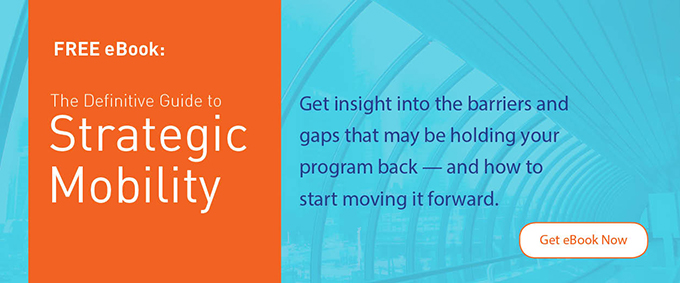
Give your centralized Mobility strategy a regional feel
Vice President, Business Development – Asia Pacific
You want to push Mobility forward for your company. But amid significant evolutionary trends — including shorter assignments, global uncertainties and a workforce craving international experience — where do you begin? Our blog series, “Transformative Insight for the World Ahead” explores emerging challenges as you strive to leverage your program as a key differentiator for people on the move.
You’re thinking big. You have great ideas. Now it’s time to integrate them into a mobility strategy to improve your Workforce Mobility program. But are you looking at the big picture? Have you sought feedback from your regional offices — even the smaller ones?
Some organizations have created centralized Mobility programs based largely on universal policies to ensure consistency for HR leaders and for mobile employees in multiple countries. But this all-for-one approach has proven to be all-too-limiting when the unique challenges and needs for each region are taken into account. Other organizations may grant their regional offices more autonomy, but do they give them the leeway and opportunity to share insights and feedback?
Regional offices know what works — and what doesn’t.
Regional leads and relocated employees are the ones most affected by gaps in your Mobility strategy. After all, they’re the ones who have to adapt quickly in order to resolve them. Unfortunately, many organizations implement an “our way or the highway” approach for workforce deployment. Or, if they do solicit feedback, it’s too late. So in essence, they’re choosing static policies that may be irrelevant when battling ever-changing, real-life challenges.
As we’ve seen with the Brexit vote, proposed U.S. immigration executive orders and other recent changes, organizations must be able to pivot quickly and accommodate change. You have to consider the impact of policy changes at the local government level before knowing how they’ll change the way you manage your talent pool.
That’s why it’s critical that regional voices are heard. After all, they can cite specific examples to illustrate where your Mobility program is lacking. Unfortunately, far too often, they’re not adequately involved when Mobility policies are created and adjusted. More importantly, they’re not the ones driving or even influencing important game-changing strategies. Maybe it’s time that changes.
Bridge gaps between home and away
You rely on metrics to measure the effectiveness of many parts of your business. Shouldn’t your Mobility program be treated the same way? Receive real-world feedback from your regional offices — backed by tangible, illuminating evidence. Measure how your functional teams interact. Find out what you need to improve. Discover what problems are thwarting the success of your Mobility program.
It’s going to be challenging. After all, many regional leaders have been resigned to using Excel or other rudimentary tools to manually track data. Some might not even have been expected to know program spend costs or KPIs until now. But many may appreciate the opportunity to share information and help build credible data sets that you can turn into insights.
You didn’t hire your regional leads to be policy wonks. You hired them because they’re savvy, observant and they know how to get things done. Listen to them. They’ll show you where those gaps are. Give them the tools they need to report on those gaps in a way that’s easy to understand. Use metrics to substantiate the issues your regional Mobility teams are facing, so their concerns can resonate throughout the organization, especially at global headquarters.
That’s the best way to make big changes (that actually work) to your Mobility strategy.
